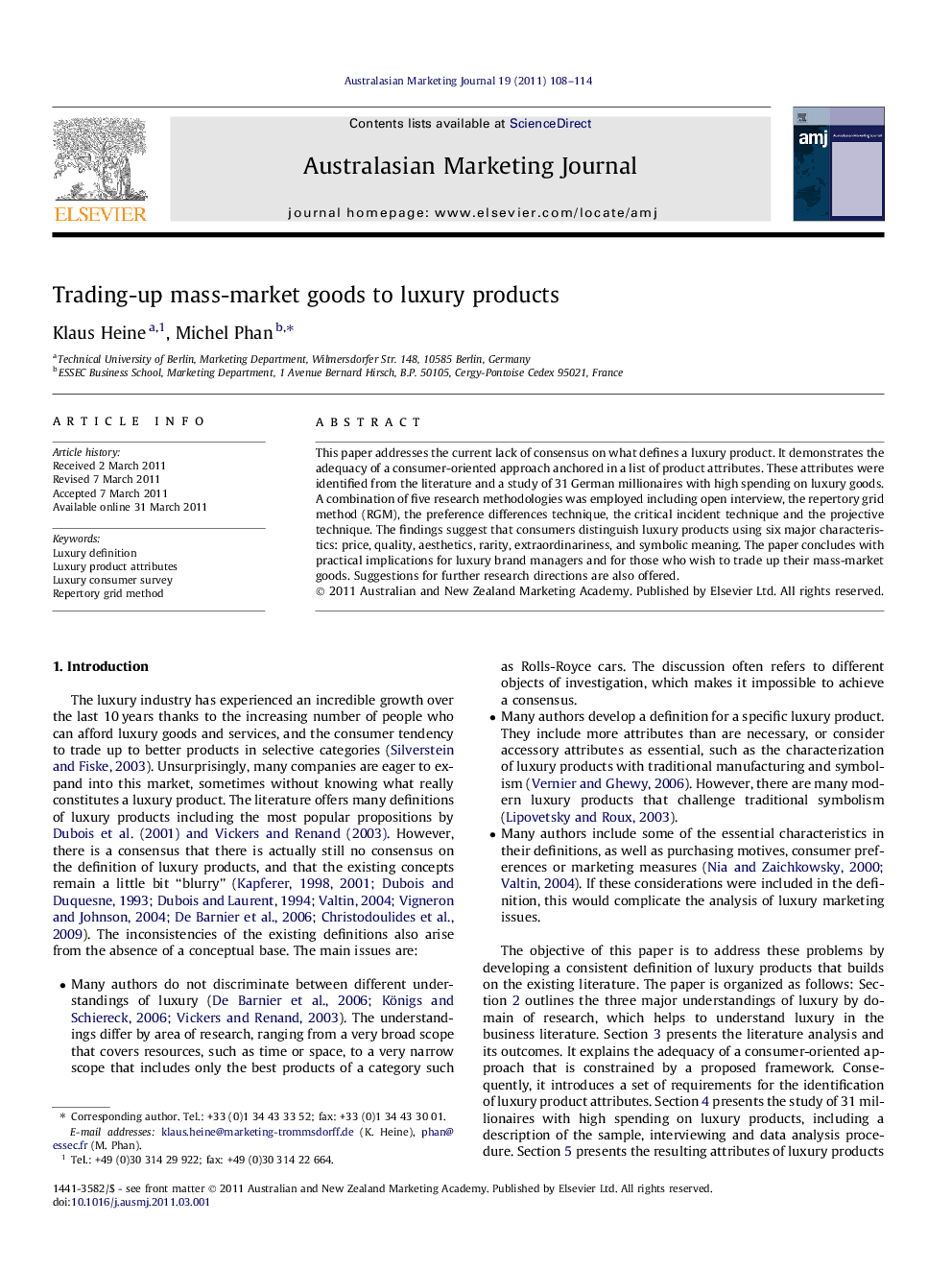| Article ID | Journal | Published Year | Pages | File Type |
|---|---|---|---|---|
| 1027219 | Australasian Marketing Journal (AMJ) | 2011 | 7 Pages |
This paper addresses the current lack of consensus on what defines a luxury product. It demonstrates the adequacy of a consumer-oriented approach anchored in a list of product attributes. These attributes were identified from the literature and a study of 31 German millionaires with high spending on luxury goods. A combination of five research methodologies was employed including open interview, the repertory grid method (RGM), the preference differences technique, the critical incident technique and the projective technique. The findings suggest that consumers distinguish luxury products using six major characteristics: price, quality, aesthetics, rarity, extraordinariness, and symbolic meaning. The paper concludes with practical implications for luxury brand managers and for those who wish to trade up their mass-market goods. Suggestions for further research directions are also offered.
► We combine a consumer-oriented research approach with a structured framework. ► Differentiate philosophical, micro-economical and managerial perspective of luxury. ► We found six major dimensions that determine the luxuriousness of a product. ► Dimensions are price, quality, aesthetics, rarity, extraordinariness, and symbolism. ► Common definitions are extended with a set of sub-attributes.
